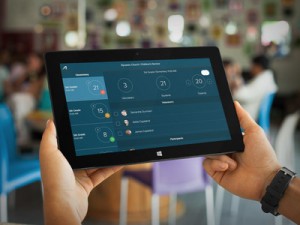
There’s a reason high-performing organizations have a hierarchy of authority and a dedicated location that serves as Command Central. When it’s “go-time,” as many variables as possible need to run like clockwork.
We’re not saying your children’s check-in is a warzone, but if the military’s highly specific structure of command is what “Command Central” brings to mind, maybe we could borrow a few paragraphs from its playbook. (Warning: Don’t let your inner Commander-in-Chief take this analogy too far. We’re talking kids and volunteers here.)
Who’s in Charge
A command center, sometimes call a “war room,” can refer to a specific location that provides centralized command for some purpose. In politics, it refers to communications teams who monitor media and synthesize all incoming factors to determine the best course of action.

In all settings, a command center’s outstanding characteristic is based on two concepts: Everyone knows who’s in charge when there’s trouble, and that person has every available resource at his or her fingertips to manage the situation.
For kids’ ministry, that means:
- An active source of leadership and guidance is present to ensure that service and order is maintained
- The leader is equipped with authority, the right tools and a structure that makes sense
- The leader has visibility into all vital aspects of the situation
Chain of Command
A chain of command just means that all roles are clearly defined, understood not just individually but with a grasp of where each role fits in the overall picture.
- Volunteers are background-checked and well-trained for their roles. They’ve been briefed on necessary information about processes, the facilities, safety regulations and—this is critical—the location of the snacks.
- Everyone knows who to go to for help with different needs, from simple logistics questions to emergency protocols.

Open Communications Channels
Managing any highly fluid situation requires a reliable communications structure. The military refers to inputs such as “sitreps” (situation reports of what is happening) and “progreps” (progress reports relative to a goal that has been set) coming in from the “field” back to Command. Outputs are the decisions made on the fly in response to shifting statuses. These must be communicated clearly and quickly.
For kids’ ministry, that means insight into:
- Number of teachers and volunteers scheduled and/or onsite
- Number of kids onsite, checked in, and/or assigned to a classroom
- Number of available classrooms and the capacities in each (in real time)
- Where and when to shift any of these as priorities change
- Plus: easy, reliable, two-way communications

Command Central in the Palm of Your Hand
Fellowship One Coordinator is a web- based application in Fellowship One church management software. It was designed to make managing multiple classrooms intuitive and efficient for whomever is in charge.

In a graphical format, this unique tool:
- Allows Coordinators to see the roster capacity and the number of volunteers and students checked in to each class in real time.
- Alerts Coordinators when a roster is approaching capacity. Roster capacities can be increased or decreased and rooms can be opened or closed to check-in at the touch of a button.
- Enables Coordinators to easily balance class sizes and teacher-to-student ratios with the ability to move volunteers and students from one class to another.
- Empowers two-way communication between Coordinator and teachers/volunteers.
- Is optimized for use on any mobile tablet device, smart phones and desktop or laptop web browsers.
- Is now available!
Find out how our Coordinator can keep your Coordinator cool as we redefine what it means to equip your leaders.



